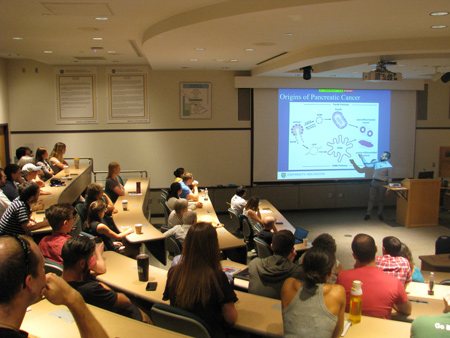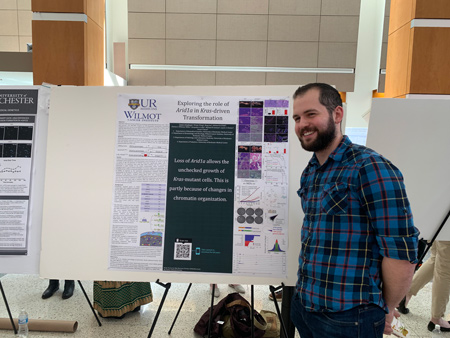GDSC Fall Retreat 2019
Wednesday, November 20, 2019
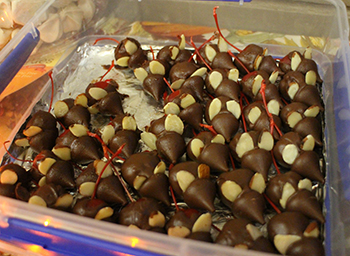
Last month, on Friday October 25th, the GDSC celebrated our annual Fall Retreat at the Olmsted Lodge in Highland Park. Among our numerous reasons to celebrate 2019 are our two most recent faculty additions, Isaac Harris and Jeevisha Baja. Our festivities began with a round of pumpkin carvings for kids, and those of us who are still kids at heart. The night continued with a game of faculty trivia. GDSC student, Anne Roskowski earned first place with a perfect score! Our games concluded with a history of science themed game of Jeopardy. Throughout the evening attendees exchanged their home cooking and recipes. We thank everyone who enriched the night with their cuisine. We also appreciate the efforts of our Fall Retreat Committee; 1st year GDSC students Emily Berry, Jamie Burchett, Dakarai Esgdaille, and Ludia Pack.
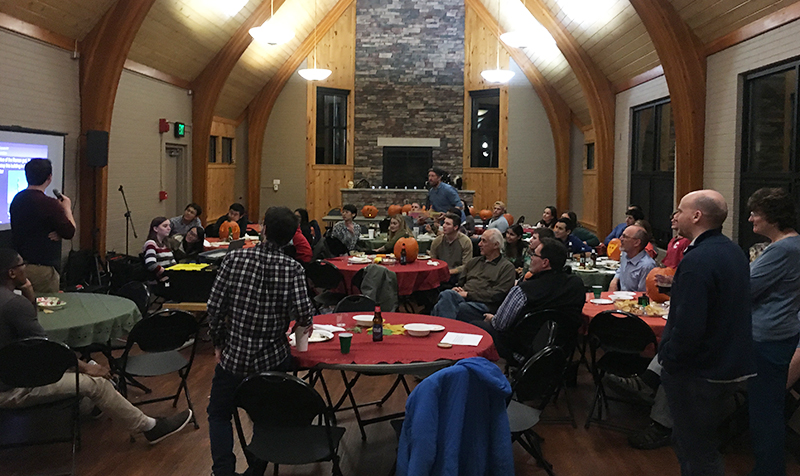
GDSC Halloween Costume Contest!
Wednesday, November 20, 2019
Last month the GDSC held our Halloween Costume Contest. Our four contestants can be seen below.
The votes are in and the winner is the Mello Lab as the cast from Alice in Wonderland! Thank you to all GDSC costume participants.
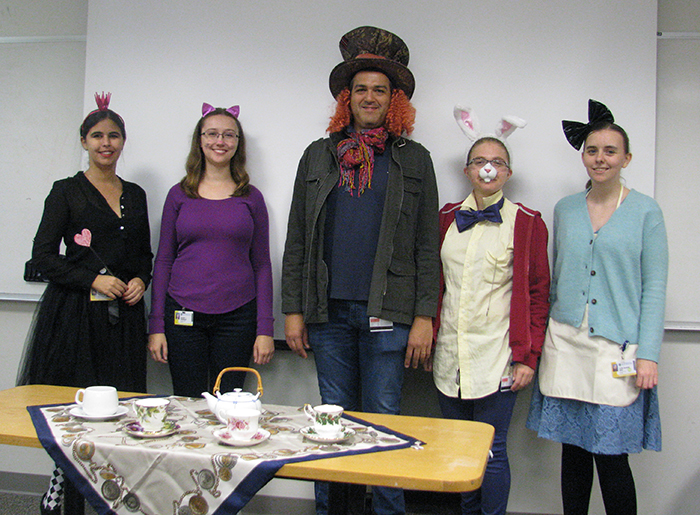
The Mello Lab as the Cast from Alice In Wonderland
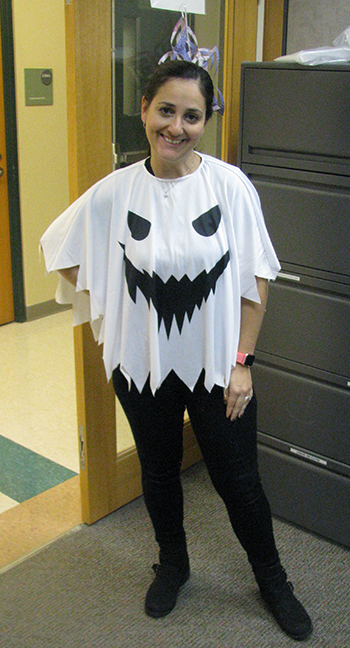
Maria Lazaro-Pena, as a Ghost
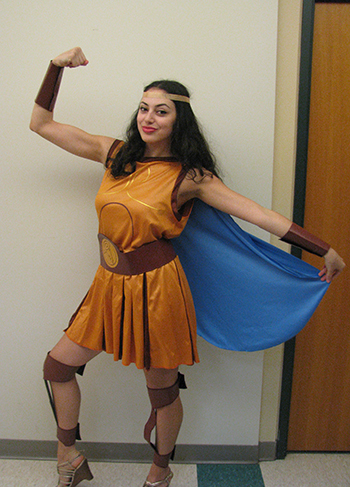
Sara Lolo, as Hercules
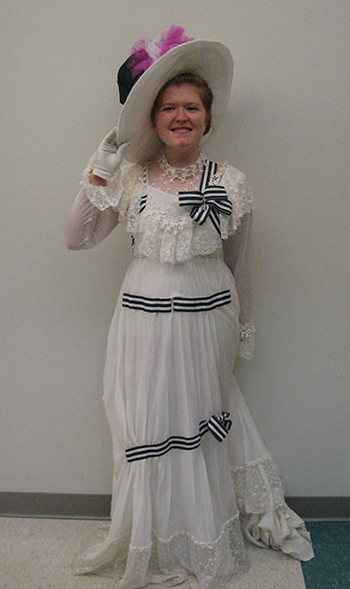
Anne Roskowski, as My Fair Lady
24th Annual WCI Scientific Symposium
Thursday, November 14, 2019
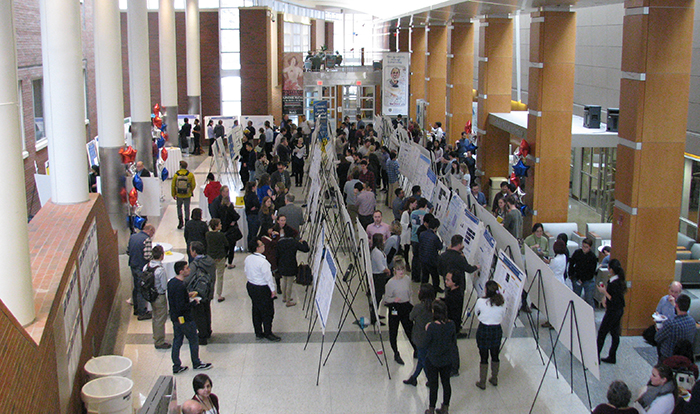
On Thursday, November 14 the GDSC supported the Wilmot Cancer Institute (WCI) in hosting their Twenty Fourth Scientific Symposium for Cancer Research and Treatment. At symposium's poster session students from the GDSC and across the UR, working in basic, translational and clinical cancer research showcased their respective cancer studies in the Flaum Atrium.
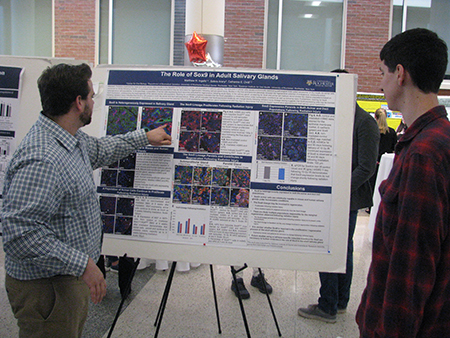 This year's poster winners were:
This year's poster winners were:
- Amber S. Keckner
- Jacob G Kallenbach
- Nicholas G. Battaglia
- Taylor P. Uccello
- Amelia M. Clark from Brian Altman's Lab
This year's Grand Poster Winners were:
- Marian Ackun-Farmmer
- Andrea M. Amitrano
Symposium speakers included GDSC faculty Isaac S. Harris and Jeevisha Baja. WCI professor Edith Lord, gave the Davey Award Lecture titled Radiotherapy and the immune response in the tumor microenvironment.
Finally, this year's Underberg Lecturer was Ari M. Melnick, M.D. Gebroe Family Professor of Hematology/Oncology from Cornell University. His lecture was titled Precision Epigenetic Therapy for B-Cell Lymphomas.
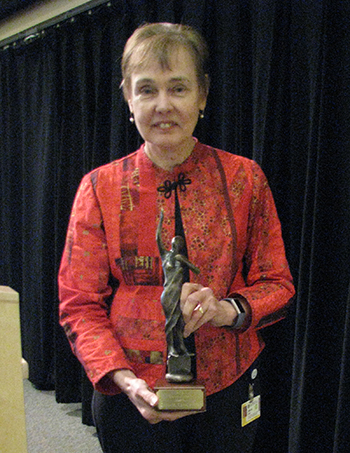
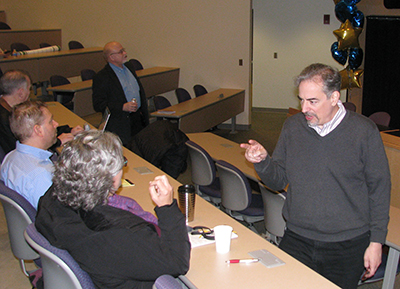
Welcome to the Class of 2019 GDSC Students
Thursday, September 19, 2019
September marks the start of graduate life in earnest for our incoming class of students: Emily Berry ('19, Univ. of New Hampshire), Jamie Burchett ('19, Northern Kentucky Univ.) Dakarai Esgdaille ('19 Wells College), Ludia Pack ('19 Univ. of Rochester) and Brandon Park ('19, Penn State Univ.). And all five students are off to a strong start:
Emily Berry was awarded the Merritt and Marjorie Cleveland Fellowship award, Ludia Pack received the 2019 J. Newell Stannard Graduate Student Scholarship Award, Dakarai Esgdaille was nominated for Graduate Alumni Fellowship Award and Jamie Burchett was an Irving L. Spar Fellowship nominee. Congratulations to all! Also a warm welcome, and best of luck as you embark on your new career paths!
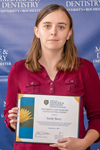
Emily Berry
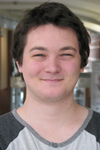
Jamie Burchett
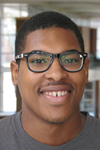
Dakarai Esgdaille
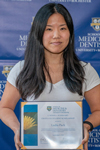
Ludia Pack
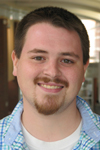
Brandon Park
GDSC Team makes a strong showing at the 7th annual Wilmot “Warrior Walk”
Wednesday, September 11, 2019
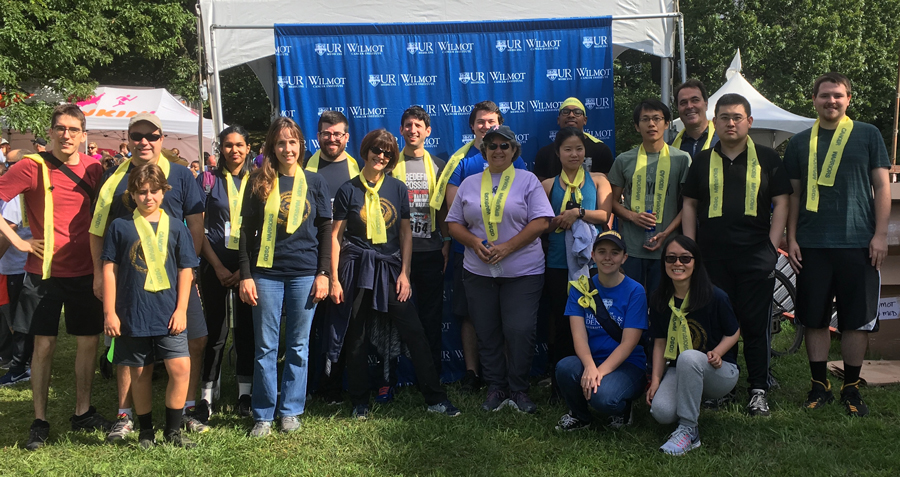
Students and faculty from Biomedical Genetics and the GDSC graduate program supported the 7th Wilmot Cancer Institute Warrior Walk last Sunday. Team "GDSC Cancer Warriors" symbolized the graduate students, post-docs and faculty working hard to find new approaches to defeating cancer - and that is in addition to the over $1000 raised by the team. A big thank you to all who gave their time and money to directly support our cancer patients and survivors!
In addition to the Survivor Walk, "GDSC Cancer Warriors" also participated in the 10K and 5K events. Notably, Patrick Murphy (10K) placed 4th, Brian Altman (5K) placed 5th, Fanju Meng (5K) placed 8th, Isaac Harris (5K) placed 15th and Xiaolu Wei placed 18th in their age-groups. Congrats on a great effort all around!
Leigh Wexler Graduates!
Friday, September 6, 2019
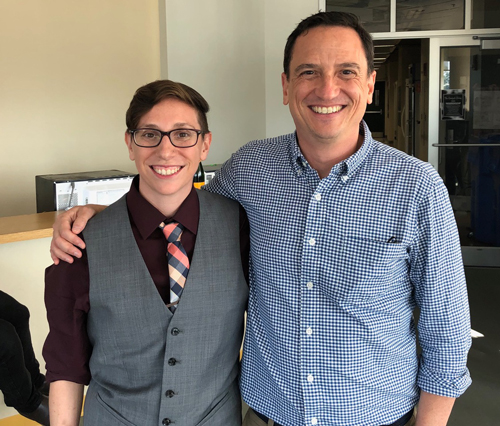
Dr. Leigh Wexler and Dr. Portman (From Left)
Congratulations to Dr. Leigh Wexler, who successfully defended their thesis this week, earning a Ph.D. in Genetics from the GDSC program. Leigh's thesis research in the Portman Lab focused on the regulation of neuronal circuit function and behavior in the nematode C. elegans. It's been known for many years that males of this species tend to leave a food source to find mates, but that depriving males of food causes them to reprioritize feeding behavior over exploration. One important component of this behavioral flexibility is regulated chemosensory function. Well-fed males detect food poorly, partly due to low expression of a food-associated chemoreceptor called ODR-10, but food-deprived males upregulate ODR-10, increasing food attraction and decreasing food-leaving behavior. In contrast, hermaphrodites (the female equivalent in C. elegans) are strongly attracted to food and exhibit high levels of ODR-10 expression even when well-fed.
Leigh's research probed the mechanism by which ODR-10 expression is influenced by feeding status in males. They found that signals through two conserved pathways, involving the TGFβ-family ligand DAF-7 and the insulin-like (IIS) receptor DAF-2, are important for keeping ODR-10 expression low in well-fed males. Further, Leigh found that males in which the IIS pathway is constitutively active fail to upregulate ODR-10 when starved. Interestingly, the DAF-7 signal appears to act upstream of IIS, indicating that a cascade of neuroendocrine interactions is necessary for repressing ODR-10. And DAF-7 does not act as a sensor of the starved male's physiological state, but rather conveys information about the presence of food in the environment.
Together, Leigh's research demonstrates that C. elegans males assess their external state, rather than their metabolism, when deciding whether to take the risk of leaving food to find a mate, and that this occurs through a multistep neuroendocrine feedback loop. Leigh's work also provides important insights into how internal and external states are integrated by the nervous system to influence gene expression, neuronal circuit function, and behavior. This work will appear in an upcoming issue of Current Biology. We wish Leigh all the best as she set out to Boston, to start her post-doctoral career in the laboratory of Max Heiman at Harvard.
Congratulations Dalia Ghoneim!
Tuesday, July 23, 2019

On July 19, Dalia Ghoneim earned her Ph.D. for successfully defending her thesis, "New functions for RNA elucidated by evolutionary conservation." She demonstrated that adjacent pairs of codons known to inhibit protein expression and to slow translation in yeast are conserved, rather than avoided. Genes with these conserved codon pairs exhibit altered translation properties. Thus, conservation is evidence that these codon pairs serve a function in yeast, although that function is yet to be determined. Additionally, in collaboration with Xin Li's lab, Dalia scanned mouse sperm transcriptome data using a machine learning method to identify sets of long-non-coding RNAs with conserved structures. Dalia was mentored by David H. Mathews and Beth Grayhack. During her studies, Dalia was awarded the prestigious Perricone MD Born Seekers fellowship. We wish Dalia all the best for her post-doctoral career!
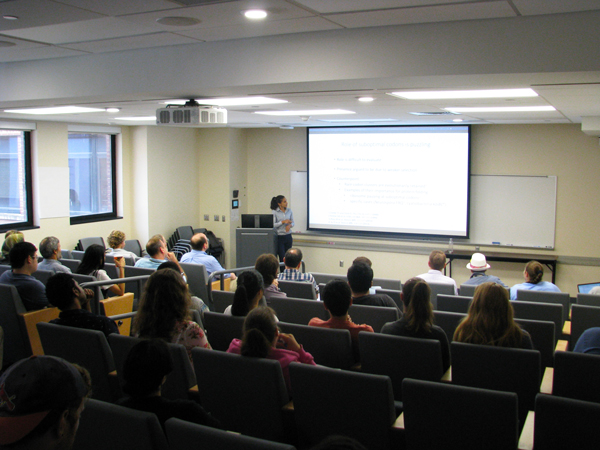
Congratulations MJ
Thursday, July 11, 2019
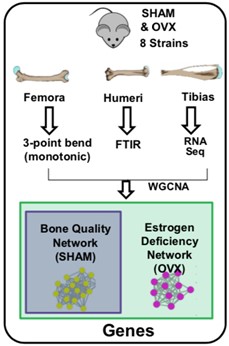 After successfully defending his thesis, MJ has completed the PhD portion of his MD/PhD studies. MJ's studies investigated the genetic basis of bone-matrix quality, an underappreciated property of bone that contributes significantly to bone strength and is of great clinical importance for understanding of bone pathology such as osteoporosis. MJ used both a classical population genetics approach as well as a systems genetics approach, and found that bone matrix characteristics such as morphology and matrix composition are indeed inheritable properties. In addition, using an estrogen-deficient model of post-menopausal bone loss, he was able to identify gene networks that may play an important role in osteoporosis. His results suggest that bone matrix quality is influenced by genetics and participates in maintaining tissue-level mechanical properties. Furthermore, identifying putative regulatory genes is clinically significant as they are presumptive targets for developing novel therapeutics. During his thesis work, MJ was the recipient of a CTSI Pilot Trainee Grant and scored a fundable F31 predoctoral fellowship from NIAMS. With his GDSC doctorate in hand MJ will return to medical school to obtain his M.D. Best of luck in your future ventures, MJ!!
After successfully defending his thesis, MJ has completed the PhD portion of his MD/PhD studies. MJ's studies investigated the genetic basis of bone-matrix quality, an underappreciated property of bone that contributes significantly to bone strength and is of great clinical importance for understanding of bone pathology such as osteoporosis. MJ used both a classical population genetics approach as well as a systems genetics approach, and found that bone matrix characteristics such as morphology and matrix composition are indeed inheritable properties. In addition, using an estrogen-deficient model of post-menopausal bone loss, he was able to identify gene networks that may play an important role in osteoporosis. His results suggest that bone matrix quality is influenced by genetics and participates in maintaining tissue-level mechanical properties. Furthermore, identifying putative regulatory genes is clinically significant as they are presumptive targets for developing novel therapeutics. During his thesis work, MJ was the recipient of a CTSI Pilot Trainee Grant and scored a fundable F31 predoctoral fellowship from NIAMS. With his GDSC doctorate in hand MJ will return to medical school to obtain his M.D. Best of luck in your future ventures, MJ!!
Scott Friedland Defends Thesis
Thursday, July 11, 2019
This week M.D./Ph.D. student Scott Friedland defended his doctoral thesis. Arriving at the GDSC in 2014, Scott pursued his Ph.D. under the mentorship of Dr. Aram Hezel. As a student Scott was granted travel awards to a national physician scientist conference and selective course at Cold Spring Harbor Labs. His thesis, titled Arid1a, a subunit of the SWI/SNF chromatin remodeling complex, is a barrier to KrasG12D-driven tumorigenesis, studied the role of SWI/SNF, a chromatin remodeling complex, in pancreatic function and disease, which has implications for the fields of cancer and developmental biology. These findings may, in time, impact the treatment of diseases such as pancreatitis and pancreatic cancer. Scott will be reinitiating his medical education alongside the class of 2021 here at the University of Rochester School of Medicine, and is interested in pursuing a career as an oncologist and cancer researcher. Congratulations Dr. Scott Carl Friedland!
Studies Led by Douglas Portman Examine Nervous System Changes During Puberty
Tuesday, July 9, 2019
Very little is known about how the onset of puberty is controlled in humans, but the discovery of a new gene in the roundworm C. elegans could be the "missing link" that determines when it's time to make this juvenile-to-adult transition. Two genes, LIN28and MKRN3, are known to be associated with precocious puberty in humans, where juveniles as young as six may start developing adult features. These genes are found in all animals, including C. elegans, in which they also control the juvenile-to-adult transition. Until the new discovery, it was unclear how these two genes are connected.
The more obvious signs of the transition of juvenile-to-adult tend to be external—body morphology, matured genitalia—but nervous system changes are also happening at the same time. In humans, the maturation of the brain during adolescence is associated with increased vulnerability to a variety of neuropsychiatric disorders, so a better understanding of these processes is important for understanding mental health as well as basic neurobiology.
Two new studies in the labs of Douglas Portman, Ph.D. at the University of Rochester Medical Center and David Fitch at New York University, published in Developmental Cell and eLife, identified a new developmental timing mechanism involving a long non-coding RNA in the microscopic roundworm C. elegans. Their research revealed a surprising new molecular mechanism that controls the timing of sex-specific changes in body shape, the maturation of neural circuits, and behavior.
C. elegans has long been used by researchers to understand fundamental mechanisms in biology. Many of the discoveries made using these worms apply throughout the animal kingdom and this research has led to a broader understanding of human biology. In fact, three Nobel Prizes in medicine and chemistry have been awarded for discoveries involving C. elegans.
The researchers identified a new gene that, when disrupted, delays the transition from the juvenile to the adult stage. Surprisingly, this gene, called lep-5, does not act as a protein, as most genes do. Instead, it functions as a long non-coding RNA (lncRNA), a recently discovered class of genes whose functions remain largely mysterious. The team observed that this lncRNA is important for promoting the juvenile-to-adult transition by directly interacting with LIN-28 and LEP-2, a C. elegans gene similar to MKRN3. Because the human versions of LEP-2 and LIN-28 are both involved in the timing of puberty, the new research suggests that a yet-to-be-discovered lncRNA might be essential to this process in humans as well.
A Graphic Design Revolution For Scientific Conference Posters
Tuesday, June 18, 2019
"Other templates didn't necessarily ask you to think about what you were putting on them because they allowed it all," says Derek Crowe, a PhD student in biomedical genetics in Hucky Land's lab with a former career in visual communication and design, "In order to use Mike's layout though, my hand is forced."
With the new template, scientists need to think about their core message, but some people have a difficult time figuring out how to do that, or how to use visuals to present their message. Without proper science communication training, even a better poster template doesn't work.
Crowe has taken matters into his own hands. Not only does he teach a course on visual communication for scientists at the University of Rochester, but he also shared his poster design tips online. In a nod to Morrison's "better poster", Crowe's is a "butter poster". He provides step by step instructions on how to organize the poster, and how to think about the content in a visual way.
"Like the graphic novel did for literature, visual languages have the power to add more dimensions to scientific storytelling," says Crowe, "I'm excited to see what happens as the greater science community begins to take advantage of well-established visual storytelling tools."
